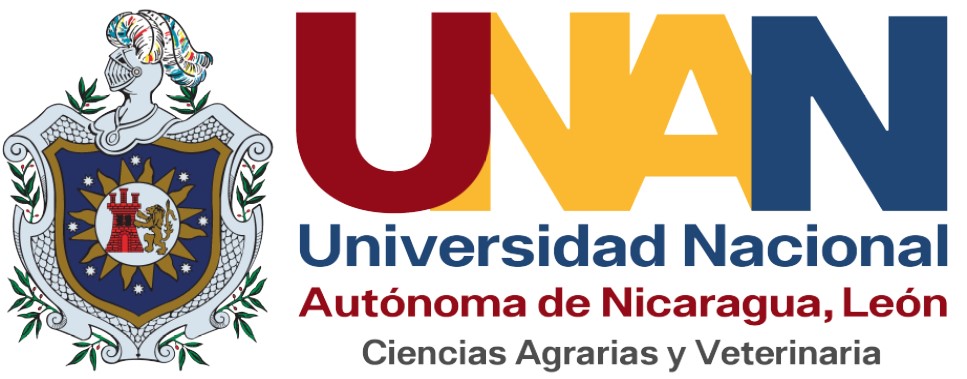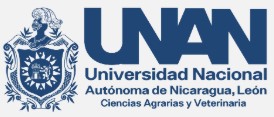Modelo de observatorio agropecuario del cambio climático en el departamento norte de Santander, Colombia
DOI:
https://doi.org/10.5377/ribcc.v6i11.9840Palabras clave:
Obervatorio, Cambio Climatico, Agricultura, EducacionResumen
Los impactos del cambio climático en el sector agropecuario requieren de la implementación de herramientas técnicas de registro, sistematización, manejo y divulgación de la información entre los actores sociales involucrados. El Modelo de Observatorio Agropecuario del Cambio Climático en el departamento Norte de Santander (OACC), Colombia, realizado entre los años 2019 y 2020, tiene como objetivo monitorear el comportamiento del sector ante los impactos del cambio climático en 3 estaciones de estudio: planicie (220 msnm), montaña (1.051 msnm) y páramo (2.400 msnm). El diseño del Modelo ameritó el desarrollo de las fases: a) Caracterización de las áreas agropecuarias potenciales para la instalación del OACC en el departamento; b) Determinación con los actores sociales agropecuarios de la región la pertinencia, ubicación y características del OACC; c) Diseño del modelo de Observatorio; d) Análisis de la factibilidad técnica del modelo de OACC; e) Estudio de la sostenibilidad financiera del OACC y; f) Validación del modelo con expertos en las áreas ambientales, agropecuarias y sociales. El Observatorio utilizará informaciones provenientes de las instituciones públicas y privadas y las derivadas directamente en las 3 estaciones de estudio para generar indicadores ambientales, económicos, productivos y sociales, como insumos contextualizados y pertinentes, para la formulación de políticas, planes y programas de desarrollo socioeconómico, educación, investigación, manejo de riesgos e información para los actores sociales de la entidad.
Descargas
Métricas
Citas
Chabbi, A., Lehmann, J., Ciais, P., Loescher, H. W., Cotrufo, M.F., Don, A., San Clements, L., Schipper, J., Six, P., Smith y Rumpel, C. (2017). Aligning agriculture and climate policy, Nature climate change, 7, 307–309. doi: https://10.1038/nclimate3286
Engel, S. y Muller, A. (2016). Payments for environmental services to promote “climate‐smart agriculture”? Potential and challenges, Agriculture Economics, 7(1), 173-184. doi: https://doi.org/10.1111/agec.12307
Febriani, L. y Lokantara I. G. (2017). Community participation towards the value of traditional architecture resilience, on the settlements’ patters in Tenganan village, Amlapura, IOP Conf. Ser.: Earth Environ. 99(1), 1-9. doi: https://10.1088/1755-1315/99/1/012018
García, M. y Fairen, V. (1980). Estructuras disipativas. Algunas nociones básicas/1, El Basilisco, 10, 8-13. Recuperado de http://www.fgbueno.es/bas/pdf/bas11002.pdf
Iglesias, A., Quiroga, S., Diz, A. y Garrote. L. (2011). Adapting agriculture to climate change, Economía Agraria y Recursos Naturales, 11(2), 109-122. doi: https://doi.org/10.7201/earn.2011.02.05
Instituto Interamericano de Cooperación para la Agricultura, IICA, 2016. Observatorio de Gestión del Riesgo y Seguros Agropecuarios de las Américas. Recuperado de http://www.fao.org/family-farming/detail/es/c/1054547/
Intergovernmental Panel on Climate Change (IPCC). (2005). Guidance Notes for Lead Authors of the IPCC Fourth Assessment Report on Addressing Uncertainties. Recuperado de https://wg1.ipcc.ch/publications/supportingmaterial/uncertainty-guidance-note.pdf
Kammen, D. (2013). Complexity and interdisciplinary approaches to environmental research, Environ. Res. 8(1), 1-4. doi: https://doi.org/10.1088/1748-9326/8/1/010201
Maturana, H. (1995). La realidad: ¿Objetiva o construida? I. fundamentos biológicos de la realidad, México: Antrophos
Observatorio Pirenaico del Cambio Climático, OPCC, 2010. Recuperado de https://opcc-ctp.org/eu
Peixoto, J., Nunes, M., Baliza, D., Pereira, S., Parreiras, S. y Rosa, B.T. (2017). Cafeicultura familiar e as boas práticas agrícolas, Coffee Science, Lavras, 12(3), 365-373. doi: https://doi.org/10.25186/cs.v12i3.1298
Pérez, J. (2010). Diseño de un observatorio ambiental para el sector de curtiembres. Estudio de caso: Curtiembres de Villa Pinzón y Chocontá. (Tesis de Maestría), Universidad Nacional, Colombia. Recuperado de http://www.switchurbanwater.eu/outputs/pdfs/W4-2_CBOG_PHD_MSc_Diseno_de_un_Observatorio_Ambiental_-_Rojas.pdf
Programa de Bosques Andinos (2020). Observatorio de bosques andinos de Antioquia. Recuperado de https://www.observatoriobosquesantioquia.org/
Saj, S., Torquebiau, E., Hainzelin, E., Pagès, J. y Maraux, F. (2017). The way forward: An agroecological perspective for Climate-Smart Agriculture, Agriculture, Ecosystems and Environment, 250, 20-24. doi: https://dx.doi.org/10.1016/j.agee.2017.09.003
Soteriades, A.D., Murray-Rust, D., Trabucco, A. y Metzger, M.J. (2017). Understanding global climate change scenarios through bioclimate stratification, Environmental Research Letters, 12(8), 1-10. doi: https://doi.org/10.1088/1748-9326/aa7689
Supadli, I., Saputri, A. y Mawengkang, H. (2018). Mitigating Local Natural Disaster through Social Aware Preparedness Using Complexity Approach, IOP Conf. Ser.: Mater. Sci. Eng. 300(1), 1-7. doi: https://doi.org/10.1088/1757-899X/300/1/012050
Williams, B. K. y Johnson, F. A. (2013). Confronting dynamics and uncertainty in optimal decision making for conservation, Environ. Res, 8(2), 1-17.doi: https://doi.org/10.1088/1748-9326/8/2/025004
Publicado
Cómo citar
Licencia
Derechos de autor 2020 Revista Iberoamericana de Bioeconomía y Cambio Climático e-ISSN 2410-7980

Esta obra está bajo una licencia internacional Creative Commons Atribución-NoComercial-CompartirIgual 4.0.
Copyright © 2025 Rev. iberoam. bioecon. cambio clim. Universidad Nacional Autónoma de Nicaragua León (UNAN-León), Area de Conocimiento de Ciencias Agrarias y Veterinarias/ Area Especifica de Agroecología y agronegocios /Centro de Investigación Ciencias Agrarias y Veterinarias. Dirección Académica. Departamento de Investigaçión. Unidad de publicaciones y eventos cientificos.












 EDITORIAL
EDITORIAL  e-ISSN
e-ISSN


 COPYRIGHT
COPYRIGHT  Este trabajo está licenciado bajo una Licencia Internacional
Este trabajo está licenciado bajo una Licencia Internacional 












